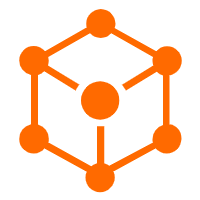By Yi Xian
This tutorial discusses how to develop Function Compute by running R Applications, but before we get down into it, let's first take a look at several important concepts mentioned in this article.
First, there's Alibaba Cloud's Function Compute, which is an event-driven service that allows users to write and upload code without having to manage server health or consider some other factors. Function Compute prepares and auto scales to the necessary amount of computing resources to run user code. The user only pays for the resources required to run their code.
Next, there's Fun, which is a deployment tool for serverless applications. It helps you manage resources, such as Function Compute, API Gateway, and Log Service. You can use Fun to develop, build, and deploy resources by describing specified resources in the template.yml file.
Note: The techniques described in this article are applicable to Fun 2.10.1 or later.
This tutorial discusses how develop Function Compute by running R Applications. The project outlined in this tutorial is developed on macOS but it also involves platform-independent tools, which are compatible with Linux and Windows. Before proceeding to this example, make sure that Docker, Fun, and Fcli are correctly installed, updated to the latest version and properly configured. You can download, update, and configure these tools with the instructions and resources on the pages linked here.
Fun and Fcli depend on Docker to simulate the local environment. MacOS users can use homebrew to install these tools:
brew cask install docker
brew tap vangie/formula
brew install fun
brew install fcliWindows and Linux users can refer to Installation to learn how to install these tools. After the installation, don't forget to first run fun config to initialize the configuration.
Note: If you have already installed Fun, make sure it is version 2.10.1 or higher.
$ fun --version
2.10.1First you can initialize the project. You can use the fun init command to easily initialize this template project to a local environment.
fun init vangie/rlang-exampleThen, you can conduct local testing by using the index.py test code, whose content is as follows:
import rpy2.robjects as robjects
from rpy2.robjects import pandas2ri
def handler(event, context):
pandas2ri.activate()
return str(robjects.r('paste0("1 + 1 = ", 1 + 1)'))The preceding code works by importing rpy2 and performing a simple addition operation in the R language. You can use the fun local command to test the function locally. To perform this step, Docker must be correctly installed in the local environment.
$ fun local invoke onePlusOne
skip pulling image aliyunfc/runtime-python3.6:1.4.0...
['1 + 1 = 2']
RequestId: 6e1f2402-9443-4392-9f6a-d87b4f79887a Billed Duration: 7543 ms Memory Size: 1998 MB Max Memory Used: 123 MBThen, you can deploy the application using the fun deploy command.
$ fun deploy
using region: cn-shanghai
using accountId: ***********4733
using accessKeyId: ***********KbBS
using timeout: 60
Waiting for service rlang to be deployed...
Waiting for function onePlusOne to be deployed...
Waiting for packaging function onePlusOne code...
package function onePlusOne code done
function onePlusOne deploy success
service rlang deploy successThen, you can run the application with the following command:
$ fcli function invoke -s rlang -f onePlusOne
['1 + 1 = 2']The pre-compiled R language environment, rpy2 library, and related apt dependency files have been put under the .fun directory. Normally, you do not need to compile the R language yourself. From my own experience, compilation can take around half an hour each time. If existing R language compilation options cannot meet your business requirements, you can see the fun.yml file, which provides a complete list of the compilation and installation methods. You can make some adjustments accordingly and then use the fun install command to complete the installation.
Develop Function Compute by Installing Third-Party Dependencies
97 posts | 7 followers
FollowAlibaba Cloud Serverless - August 21, 2019
Alibaba Cloud Serverless - April 7, 2020
Alibaba Clouder - February 24, 2021
Alibaba Developer - April 7, 2020
Alibaba Clouder - September 24, 2020
Alibaba Cloud Serverless - April 7, 2020
97 posts | 7 followers
Follow Function Compute
Function Compute
Alibaba Cloud Function Compute is a fully-managed event-driven compute service. It allows you to focus on writing and uploading code without the need to manage infrastructure such as servers.
Learn More Accelerated Global Networking Solution for Distance Learning
Accelerated Global Networking Solution for Distance Learning
Alibaba Cloud offers an accelerated global networking solution that makes distance learning just the same as in-class teaching.
Learn More Serverless Workflow
Serverless Workflow
Visualization, O&M-free orchestration, and Coordination of Stateful Application Scenarios
Learn More Serverless Application Engine
Serverless Application Engine
Serverless Application Engine (SAE) is the world's first application-oriented serverless PaaS, providing a cost-effective and highly efficient one-stop application hosting solution.
Learn MoreMore Posts by Alibaba Cloud Serverless